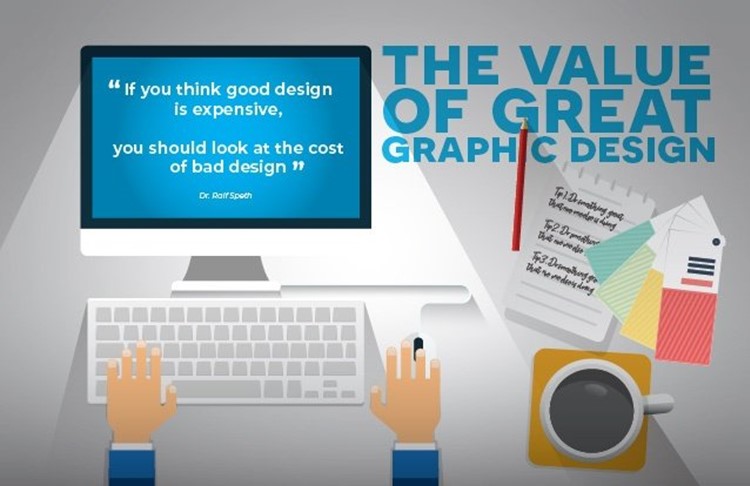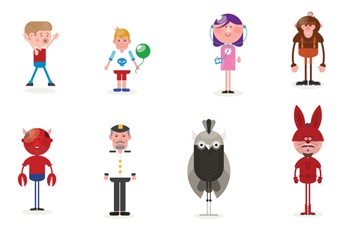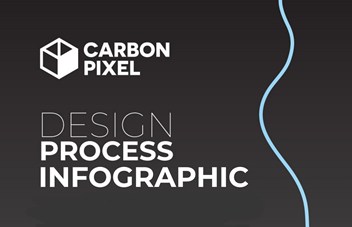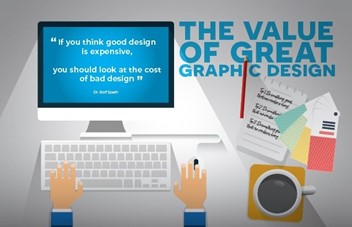Graphic design as defined by Wikipedia as ".. the process of visual communication and problem-solving using one or more of typography, photography and illustration."
It's a term coined back in the 1920s by William Addison Dwiggins - he used it to describe his process for designing books, but the visualisation or combination of words with images goes much, much further back to the 15th century (1).
“Design is thinking made visual.” Saul Bass
Whilst I am not going to go into the history of graphic design here, you can find out lots more from this entry in the Encyclopedia Britannica. Suffice it to say, that over time as needs and technologies of both creating and viewing graphic design have evolved, so has the discipline but what still remains is that graphic design done well will not only impress but engage and communicate with your audience.
I recently shared an article of design fails (if you missed it, it's here) which was really quite hilarious to read through. But, when you think about it a bit deeper, some poor sucker has paid the price of those massive fails, not only possibly the price of commissioning the work, but the ridicule that the work brings and maybe even loss of revenue as a consequence.
Whilst everyone has an opinion on design, an expert has studied and crafted the skill, has consumed everything they can on the subject and practised and practised, paid and unpaid. Sometimes they've learnt the hard way, but learnt nevertheless and are still learning. This experience and process can make an expert and like most crafted skills, this can't be done overnight.
A great graphic designer understands that creating a really striking visual which really nails it, does that by building an emotive connection with the intended audience. Whether it be signage, a printed brochure or an infographic, the first task of any graphic designer will be to understand the audience, as well as, if not better than the business or brand they are designing for. Without that valuable insight, any design is likely to miss the mark.
Once the audience is understood, the psychology behind graphic design can be explored. This a great article which digs a little deeper into the meanings conveyed by certain fonts, colours and shapes. It's a great read and makes you think a little differently about some of the well know logos and brands you see.
Big brands that continually present great designs are really communicating to the heart of their audience leaving them with a feeling of "Yeah, they get it me," or "Yeah, I need that". As a small business, you can evoke the same pleasant feeling of being understood using great designs to connect with your audience. Studies show that positive emotions toward a brand have a far greater influence on consumer loyalty than trust and other judgments, which are based on a brand’s attributes (2).
“There are three responses to a piece of design – yes, no, and WOW! Wow is the one to aim for.” Milton Glaser
Leaving the psychology behind, great graphic design also makes a business stand out. A striking logo and a well put together business card are great first impressions. How many times at a networking event have you either being secretly envious of an innovative, quality feel card or 2) silently critical of a flimsy, badly cut one.
You can use graphic design to give your business personality and differentiate you. With so much competition in the small business arena, a little personality goes a long way in engaging and original to your audience. Whether that be a character or a specific style you choose for your artwork, personality becomes memorable and again helps you to stand out.
“A powerful visual presence is necessary for any message to survive amongst the noise of today" Dave Foster
Importantly great graphic design will convey authenticity and credibility. A professional well-illustrated brochure or flyer will convey a huge amount of information to the viewer even before they read any of the text. Just the look of the document, the choice of colours and fonts, even the weight of the paper can evoke an opinion.
“Design is the silent ambassador of your brand.” Paul Rand
If you've read this far, you've probably got the point of this article, don't scrimp on graphic design, it's just not worth it. Your mother's brother's cousin's son studying design at school probably could knock you up a new logo and business card. If they are a design genius they may well get it spot on, but that's rare, very, very rare.
The value to your business of a great visual identity really can affect your engagement, reputation and most importantly for your bottom line - find someone with experience that you trust to get it right.
LINKS
(1) https://www.britannica.com/art/graphic-design
(2) http://www.meg-research.com/downloads/Do-Emotions-Sell.pdf page 5






